| |
Cryptocoryne cruddasiana Prain |
| (Document service) |
Cryptocoryne cruddasiana is endemic in the north of Myanmar (Burma) where it was first collected in 1889, in the last century only a few times. It proved to be very hard to recollect it, several attempts failed, but just at the end of 2005, Jin Murata from Japan was able to find flowering plants. Plants were shipped to Bogner who flowered it in the greenhouses of the Munich Botanical Garden. Today it is widespread in Europe.
Click on the picture to get the full image (ca. 50 kB) |
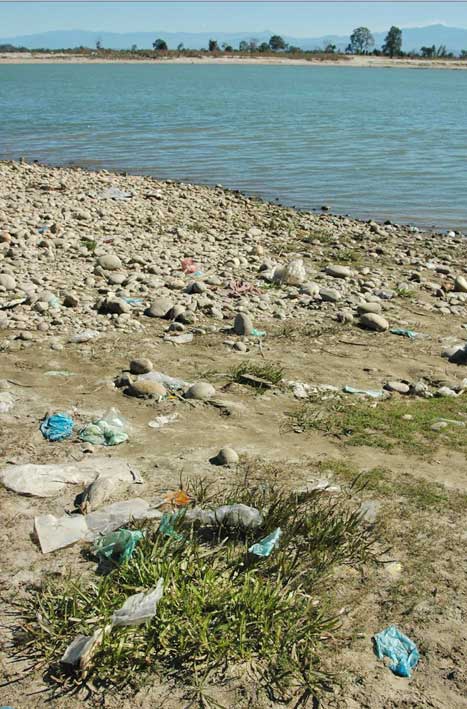 |
Bank of the Irrawaddy River near the marketplace of Myitkyina. Note the plastic debris in this patch of C. cruddasiana.
photo Murata |
|
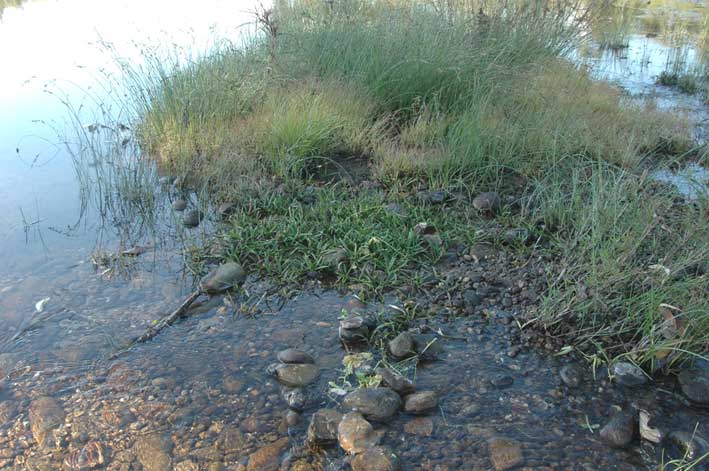 |
In December the water level is low. Locality near Shinbwiyang.
photo Murata
|
|
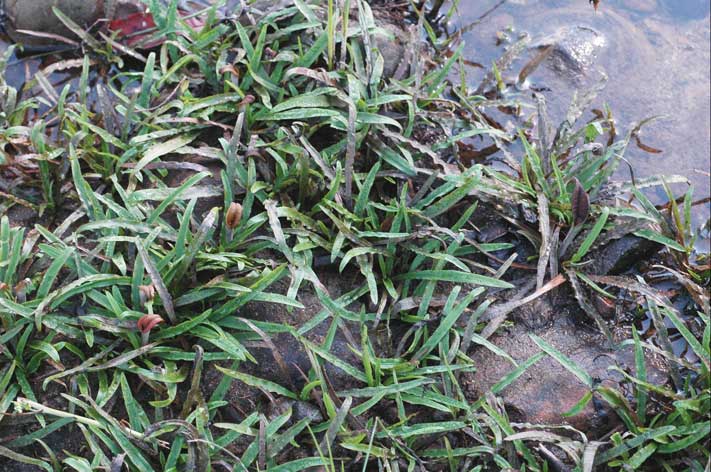 |
The same spot near Shinbwiyang. Some plants have somewhat brown spotted leaves
photo Murata |
|
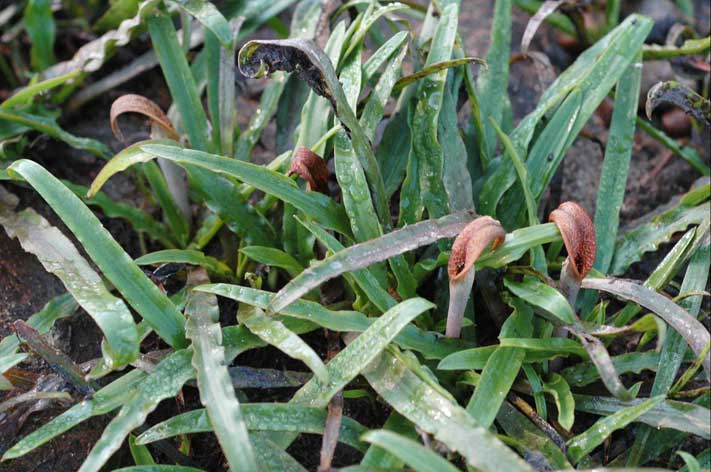 |
Idem. Note the backwards bend limb of the spathe.
photo Murata
|
|
| |
|
|
|
 |
Another close up of the Shinbwiyang habitat. Note the undulated leave margins.
photo Murata
|
|
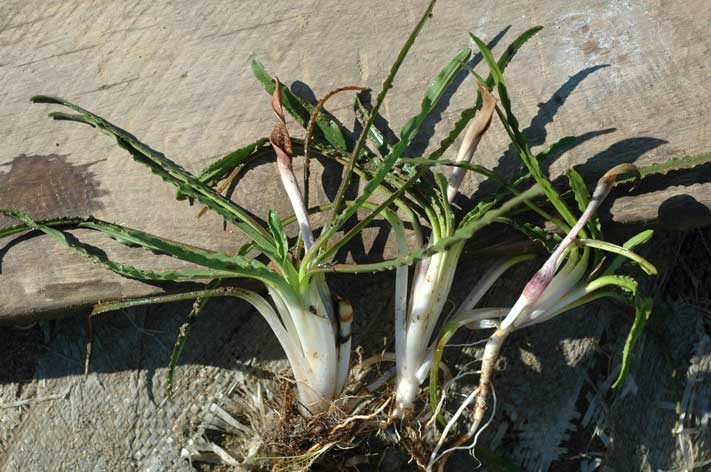 |
The left plant has a twisted limb of the spathe, the other bend backwards. The lower part of he leaves (white) were buried in the soil.
photo Murata
|
|
 |
A length cut through the spathe. Shinbwiyang
photo Murata
|
|
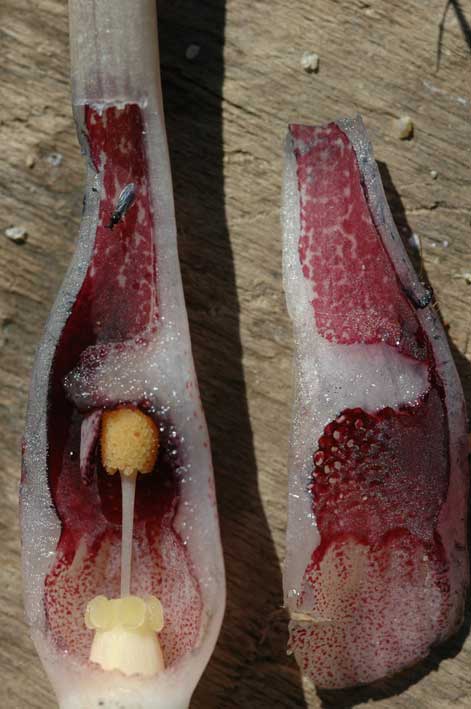 |
A close up of the kettle.
photo Murata
|
|
| |
|
|
|
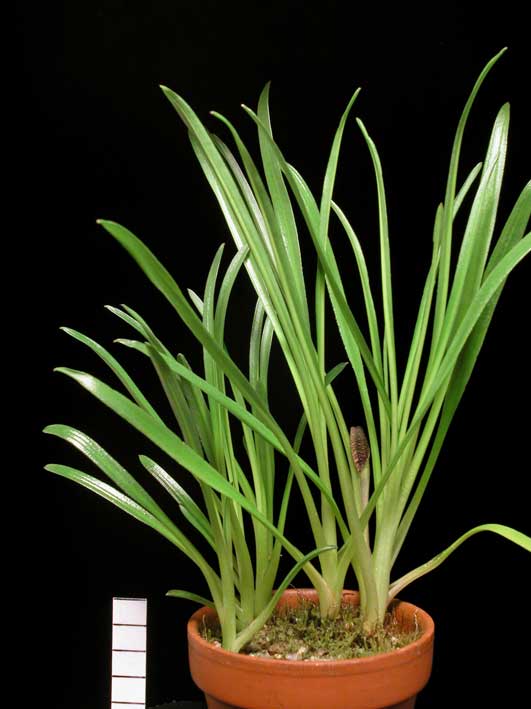 |
Cultivated in a 9 cm pot standing in a few cm water. They flower end winter, start of spring. In summer they collapse, shedding all their leaves.
coll.: Murata 041201, cult B 1192
|
|
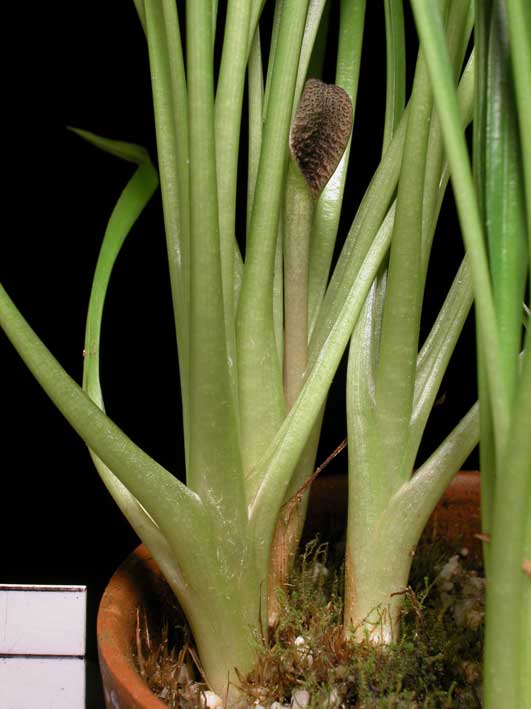 |
The spathe is easy overlooked as it is hidden between the petioles.
coll.: Murata 041201, cult B 1192
|
|
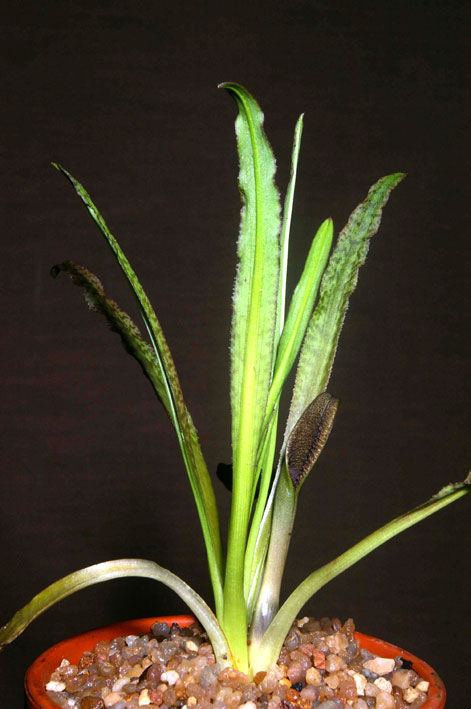 |
The brownish mottled leaves disappear in cultivation. Also the leave margin is smooth in cultivation.
coll.: Murata 041201, cult. Bogner,
photo: Gerlach
|
|
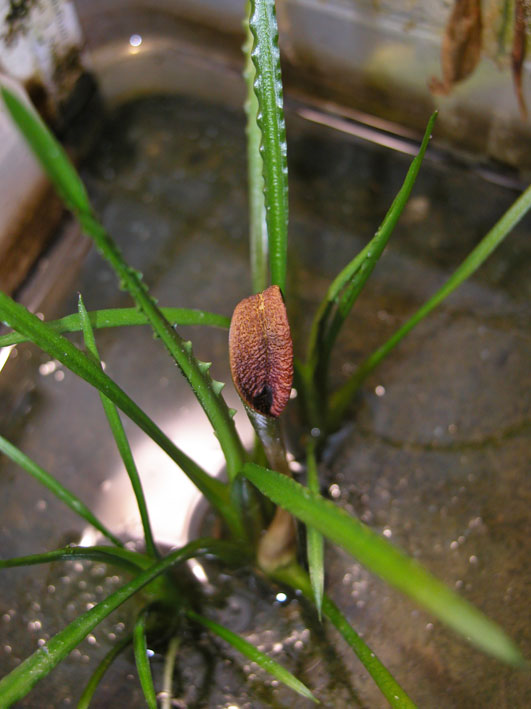 |
Cultivation in shallow water by Niels Jacobsen.
coll.: Murata 041201, cult NJ
photo: Jacobsen
|
|
| |
|
|
|
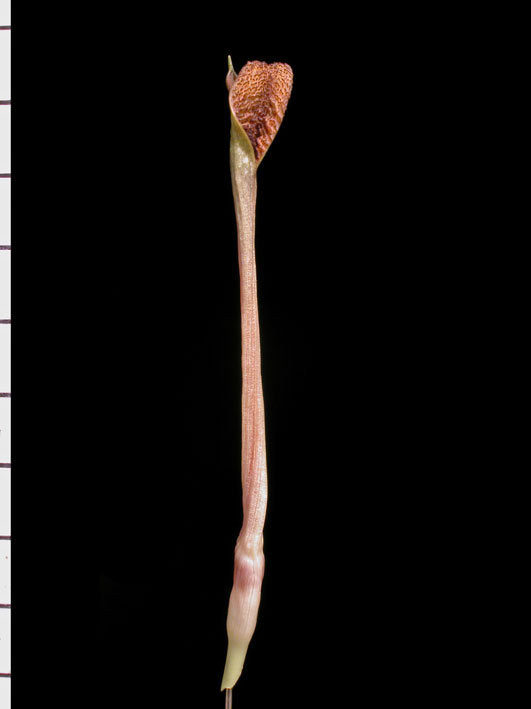 |
The tube of a young growing spathe is greenish (difficult to see between the leaves) and may turn into cream / reddish.
coll.: Murata 041201, cult B 1192
|
|
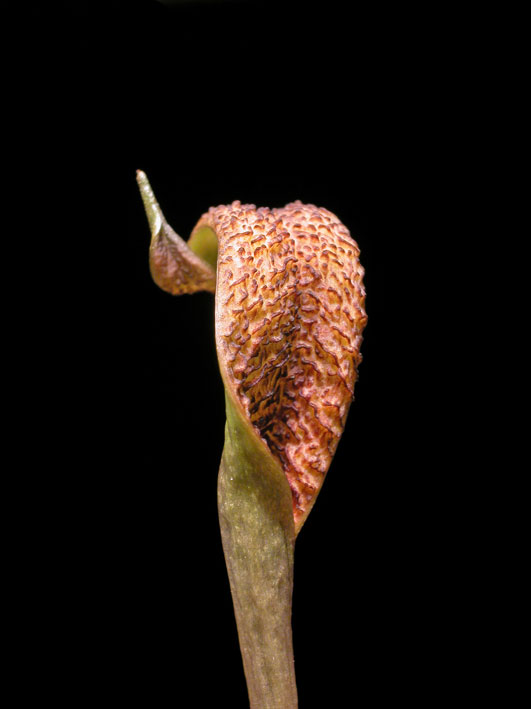 |
The limb has a creamish background with on it reddish to brownish bulges, on the lower part in rows (ridges).
coll.: Murata 041201, cult B 1192
|
|
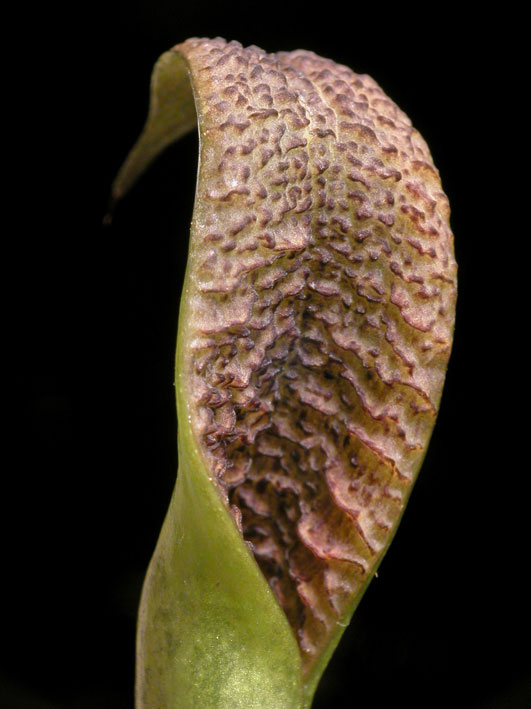 |
The transverse ridges are clearly visible in this lighting.
coll.: Murata 041201, cult B 1192
|
|
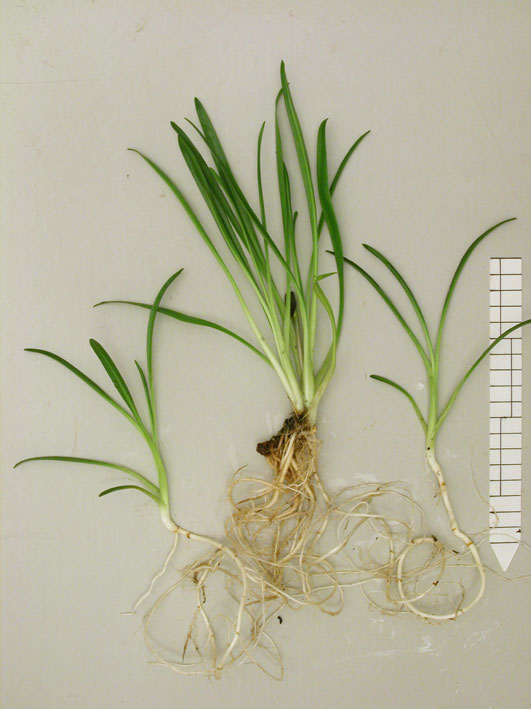 |
C. cruddasiana propagates very well by runners.
coll.: Murata 041201, cult B 1192
|
|
| |
|
|
|
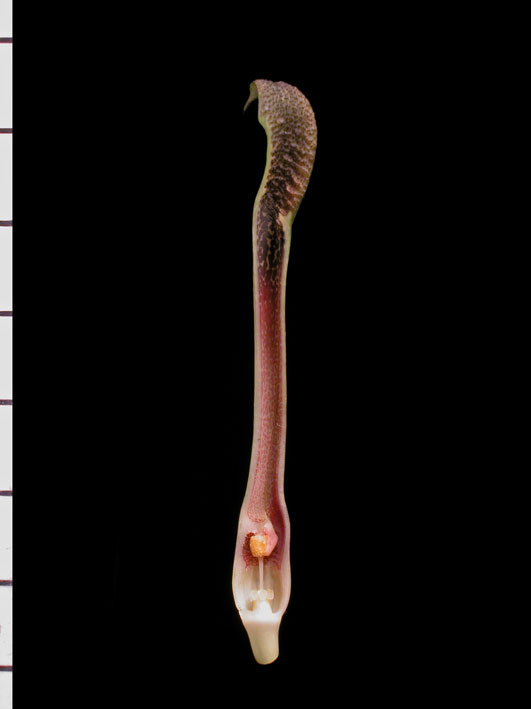 |
A longitudinal cut of the spathe.
coll.: Murata 041201, cult B 1192
|
|
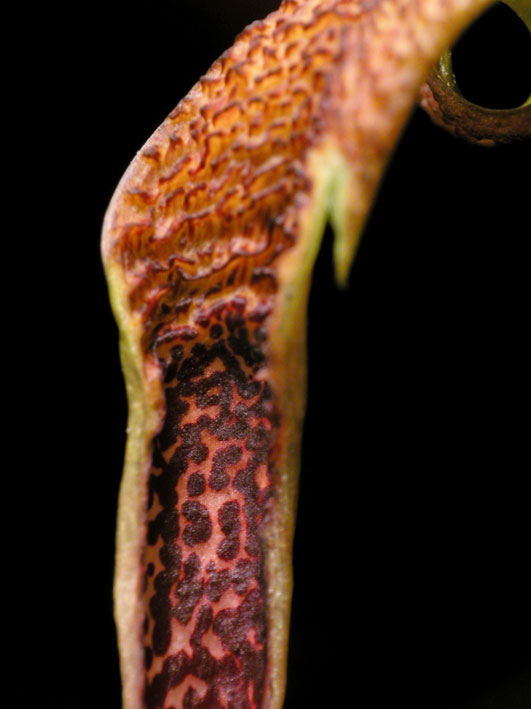 |
The upper part off the tube inside is dark purple spotted.
coll.: Murata 041201, cult B 1192
|
|
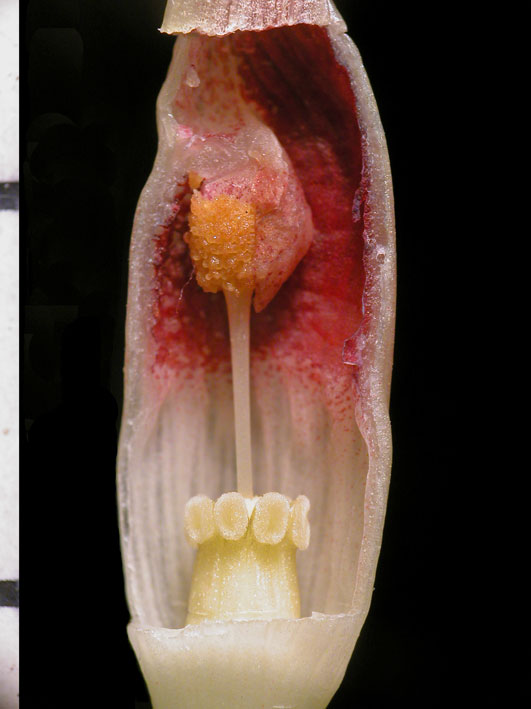 |
Sometimes the whole kettle is purple inside and may be more constricted in the middle. Note the transverse wall just above the male flowers (top).
coll.: Murata 041201, cult B 1192
|
|
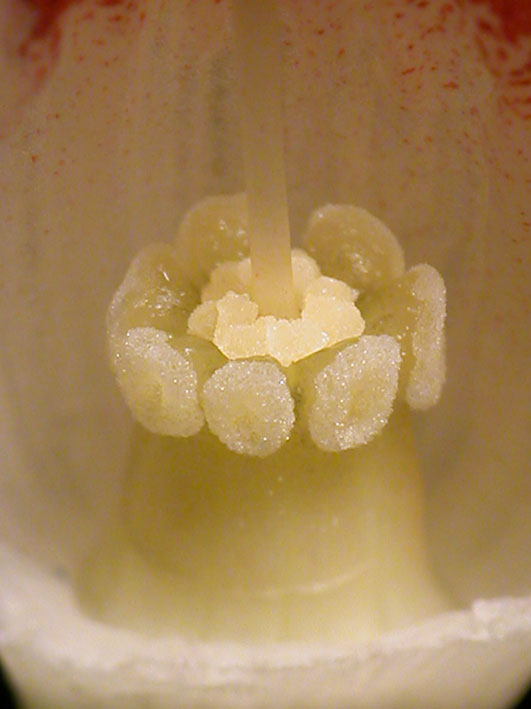 |
The female flowers with the inner circle of the so called olfactory bodies.
coll.: Murata 041201, cult B 1192
|
|
| |
|
|
|
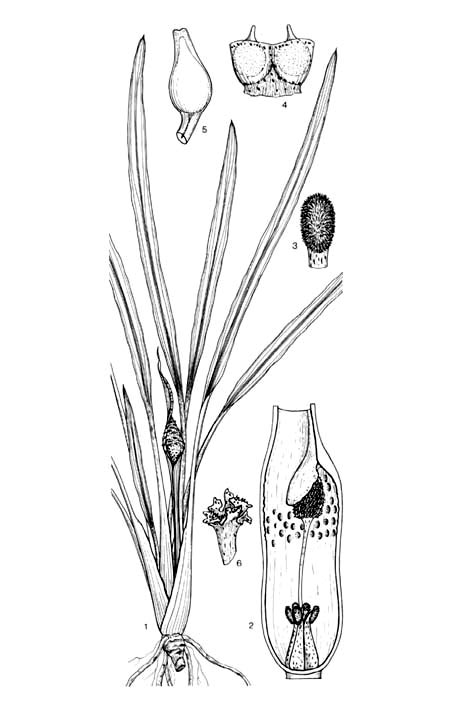 |
Drawing made from various herbarium specimens in de Wit (1990). (Document service)
drawing Ike Zewald
|
|
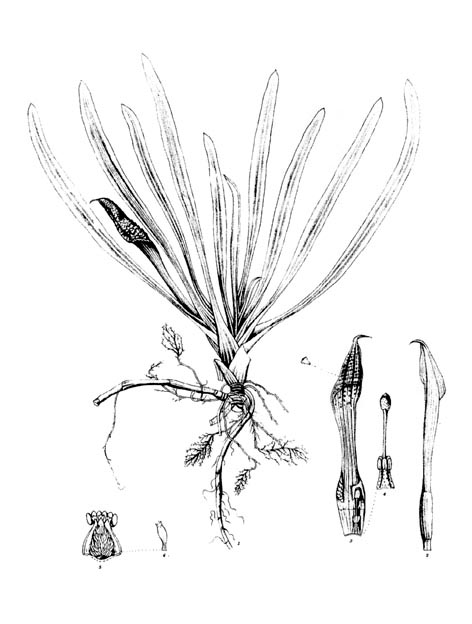 |
The original drawing of C. cruddasiana in Prain (1901).
coll. Mokim s.n (1898)
|
|
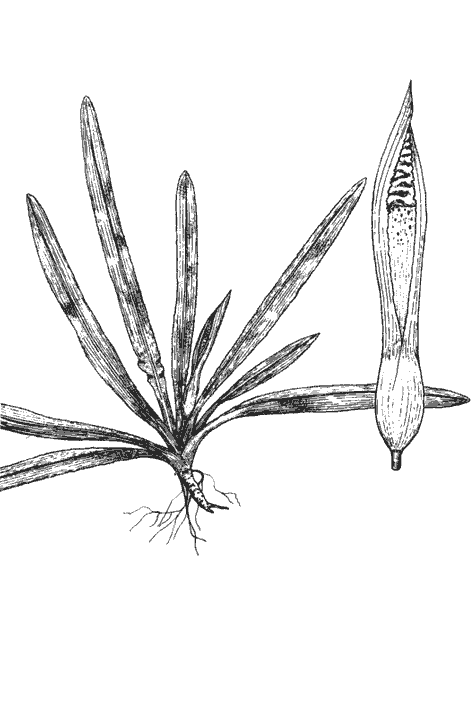 |
Drawing in Rataj (1975, as C. burmensis). This plant originates from near the Tibet frontier.
coll. Kingdom Ward 9045
|
|
 |
Distribution of C. cruddasiana in the Kachin hills in northern Myanmar.
|
|
| |
|
|
|
Cultivation is relative easy in a neutral soil. But C. cruddasiana is like C. crispatula var. crispatula, var. yunnanensis, var. decus-mekongensis, C. loeiensis, C. mekongensis and C. retrospiralis a plant from (big) rivers with a great amplitude in water level during the season, where it grows half a year submerged (up to 10 m water, fully dark) and the other half year emerged in full sun at soil temperatures up to 50 degrees. In emerged cultivation where the plant grows the full year emergent, it maintains its seasonal character, going down in summer. As far as I know nobody tried to cultivate it permanently submerged in an aquarium. Up to you ?
See for comparison the page for the C. crispatula-group.
Updated May 2014 |
Literature:
- Bogner, J. 2009. Cryptocoryne cruddasiana Prain, eine endemische Art aus Myanmar (Burma). Aqua Planta 34-1: 4 - 13. (Document service)
- Engler, A.,1920. (Cryptocoryne, Lagenandra in) Das Pflanzenreich IV.23.F. Araceae - Aroideae : 232-249, Leipzig.
Jacobsen, N., 1982. Cryptocorynen. Alfred Kernen Verlag, Stuttgart.
- Prain, D., 1900. Some new plants from Eastern India: Cryptocoryne cruddasiana Prain. J.As.Soc.Bengal, Vol LXIX : 174. (Document service)
- Prain, D., 1901. Cryptocoryne cruddasiana Prain. Ann. Roy. Bot:Gard. Calc, Vol IX, part 1, plate 90. (Document service)
- Rataj, K., 1975. Revision of the genus Cryptocoryne Fischer. Studie CSAV, c.3.Praha.
- Tanaka, Nobuyuki, Tanaka Norio, Ohi-TomaTetsuo & Mutata, Jin, 2007. New and noteworthy plant collections from Myanmar (2) - Aponogeton lakhonensis, Cryptocoryne cruddasiana, C. crispatula var. balansae and Stichoneuron membranaceum. The Journal of Japanese Botany 82(5): 266 - 273 (with four plates).
- Wit, H.C.D.de, 1961. Het genus Cryptocoryne (15), Cryptocoryne cruddasiana Prain en C. elliptica N.E. Brown. Het Aquarium 31(8): 180-181.
- Wit, H.C.D.de, 1970. A key to the species of Cryptocoryne Fish.ex Wydl.(Araceae). Misc.papers LH Wageningen 6 : 257-280.
- Wit, H.C.D.de, 1990. Aquarienpflanzen, 2. Auflage. Ulmer, Stuttgart. ISBN 3-8001-7185-6. (legends to the drawings in the Document service)
|
|
|
|
 |
|
|